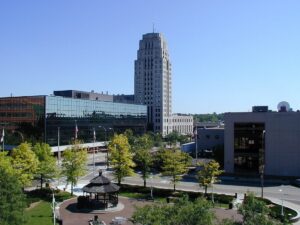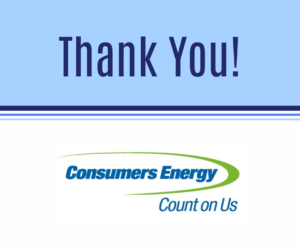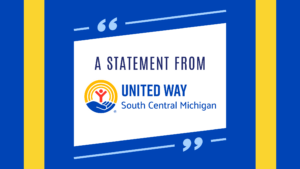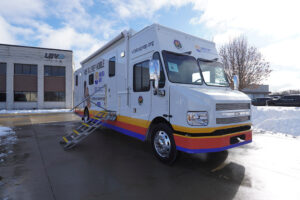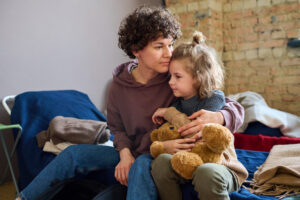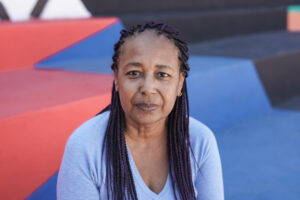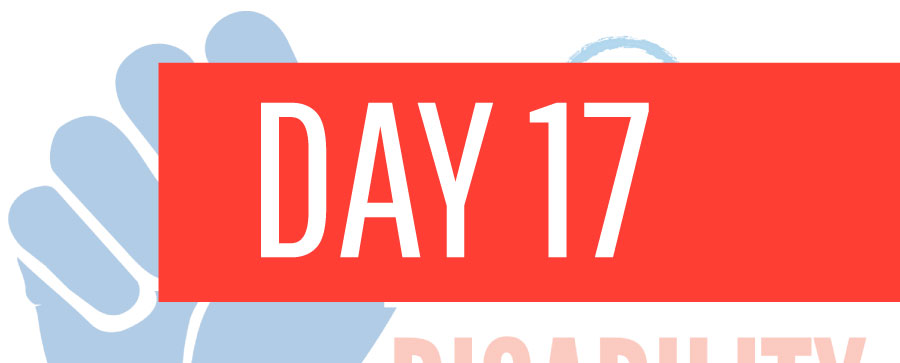
Although there are laws in place to protect the housing rights of people with disabilities, discriminatory policies and practices still exist. Barriers to affordable and accessible housing for people with disabilities increase their risk of housing insecurity.
One example of a discriminatory housing practice is when property management companies require that applicants earn three times the monthly rent to be considered for housing. According to a Brandeis University report, about a quarter of people with disabilities spend half or more of their monthly income on their rent or mortgage. Because 52% of disabled people in the US struggle to afford basic needs, many people with disabilities don’t make enough to pay market rent rates and are left looking for affordable housing without success. Often, affordable housing applicants are put on waiting lists that range between six months to a year and a half.
Another example of disability discrimination in housing is a landlord not allowing a tenant with a mental health disability to have an Emotional Support Animal (ESA) in a pet-free apartment complex. Under the Fair Housing Act, assistance animals include both ESAs and service animals and are not considered pets, so people with disabilities have a right to have them in their homes.
When you add the need for accessibility to the equation, finding affordable housing is considerably more challenging. The Department of Housing & Urban Development (HUD) reports that 19% of United States households include someone who needs accessible housing due to a mobility disability, yet 40% of these households live in a place where they must climb stairs to enter and exit. The Fair Housing Act requires most new multi-family housing units in the US to be built with certain accessibility features, but there are no federal accessibility requirements for single-family homes.
Housing insecurity is an issue that disproportionately impacts people from various marginalized groups, including the disability community. The term “housing-insecure” can refer to homelessness, but it can also refer to people who, due to financial reasons, must consistently move from place to place, live in overcrowded, multi-family homes, or are unable to meet their housing costs and face utilities shutdown, eviction, or foreclosure. People with disabilities, who are twice as likely to live in poverty as their non-disabled peers, face all of the above. According to a 2023 HUD report, approximately 31% of people who are unhoused in the US have a disability. Some people prefer the terms “unhoused” or “houseless” over the term “homeless.” Proponents say these terms do a better job of capturing their situation because home can include community, memories, family, and friends, while a house is the actual structure that unhoused people lack. Other people prefer the term “homeless,” believing that it better describes their experience.
![[Image description: An infographic titled “Housing Inequality” reads: “Approximately 1 in 3 unhoused people in America has at least one disability.” To the right of the text is an illustration depicting this statistic. A black icon of a crossed-out house is next to nine different person icons representing unhoused people. Six of these icons are non-disabled people, in orange. Three of these icons are disabled people (one using a cane, one using a wheelchair, and one with a non-apparent disability), in black. Disability Network Southwest Michigan blue and orange logo in upper left corner of the image.
Attribution: Disability Network Southwest Michigan (2024).
Data source: US Department of Housing and Urban Development, The 2023 Annual Homelessness Assessment Report (AHAR) to Congress.]](https://unitedforscmi.org/wp-content/uploads/2022/08/dec17.jpg)
[Image description: An infographic titled “Housing Inequality” reads: “Approximately 1 in 3 unhoused people in America has at least one disability.” To the right of the text is an illustration depicting this statistic. A black icon of a crossed-out house is next to nine different person icons representing unhoused people. Six of these icons are non-disabled people, in orange. Three of these icons are disabled people (one using a cane, one using a wheelchair, and one with a non-apparent disability), in black. Disability Network Southwest Michigan blue and orange logo in upper left corner of the image.
Attribution: Disability Network Southwest Michigan (2024). Data source: US Department of Housing and Urban Development, The 2023 Annual Homelessness Assessment Report (AHAR) to Congress.]
Many shelters for unhoused people across the country are not accessible to people with disabilities, leaving some unhoused disabled people with only the option of sleeping outdoors. Bans on camping in many jurisdictions have led to unhoused people being arrested simply for sleeping outside in public spaces. In recent years, some lawmakers have even proposed institutionalizing all unhoused disabled people, which would reverse many of the hard-won victories of the Disability Rights Movement. Emergency shelters, incarceration, and institutionalization cannot solve the long-term problem of lacking a house. Years of research have shown that the Housing First model is an effective way to end homelessness at the individual level. Housing First is a policy of offering unconditional, permanent housing as quickly as possible to unhoused people, along with supportive services afterward. The lack of fully accessible and truly affordable housing across the country combines with other economic disparities to significantly limit disabled people’s opportunities for housing in America. Policymakers must create and enforce policies that require inclusive rental and real estate practices, accessible housing design, and promote Housing First approaches to homelessness. Everyone deserves access to safe, affordable, and accessible housing.

Read
- Jessicah Pierre, Inequality.org – Accessible Housing Should Be Affordable, Too
- Bianca Gonzalez, Prism – Disabled People of Color Continue to Fight for Accessible Housing
- Rachel Litchman, Disability Visibility Project – Reflecting on My Experiences as a Homeless Youth With Disabilities

Watch
- Michigan State Housing Development Authority – Fair Housing in Michigan (2:39, includes captions)
- Invisible People – Disabled Man Arrested for Being Homeless in Las Vegas—Twice (6:20, includes captions and transcript)
- Content Note: Descriptions of incarceration, abuse by law enforcement, disabled by homelessness, robbery, racism, and ableism.
- Fair Housing Center of Central Indiana – Sarah’s Housing Discrimination Story and Reasonable Accommodations (6:06, includes captions and transcript)
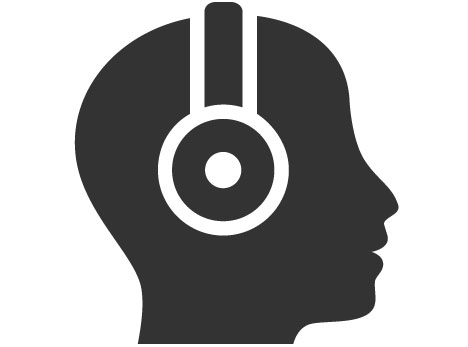
Listen
Doublewide Dudes Podcast – Unique Affordable Housing Challenges for Aging Adults and People With Disabilities (40:06, includes transcript)
Discussion
- What are some ways that housing insecurity among people with disabilities can be addressed locally?
- How does considering the issue of homelessness and disability make you feel?




